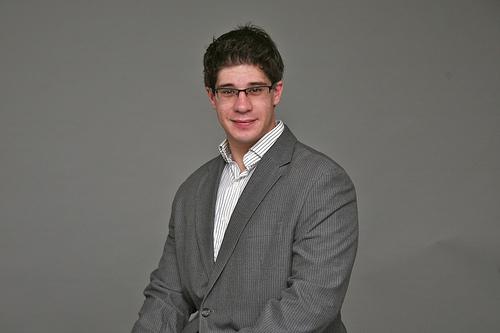
Second year Ph.D. student in the electrical sciences and engineering group Carlos Bledt has won a three-year National Defense Science and Engineering (NDSEG) Fellowship
Credit: Amy Simmons/Brown University
Carlos Bledt, a second year Ph.D. student in the electrical sciences and engineering group at the School of Engineering at Brown University, has won a three-year National Defense Science and Engineering (NDSEG) Fellowship.
The NDSEG Fellowship is sponsored and funded by the Department of Defense (DoD). Bledt was selected by the DoD from over 3,000 applications that were received this year. The NDSEG Fellowship covers his full tuition and all mandatory fees for three years (36 months). In addition, the NDSEG Fellowship provides Bledt with a yearly stipend.
NDSEG selections are made by the Air Force Research Laboratory/Air Force Office of Scientific Research (AFRL/AFOSR), the Office of Naval Research (ONR), the Army Research Office (ARO), and the DoD High Performance Computing Modernization Program Office (HPCMO). The American Society for Engineering Education (ASEE) administers the NDSEG Fellowship Program.
Bledt is a 2012 graduate of Rutgers with a degree in materials science and engineering. At Brown, he is conducting research under the guidance of his thesis advisor Professor Jimmy Xu on the theoretical and experimental investigation of optical surface wave phenomena at specialized media interfaces. In particular, he is focusing on the appearance of a novel type of lossless surface waves capable of propagating at optically anisotropic media interfaces under stringent interface conditions. These highly localized, lossless surface waves, known as Dyakonov surface waves (DSWs), have tremendous potential in enabling next-generation technological capabilities, ranging from high-sensitivity bio-sensing to highly localized and miniaturized optical interconnect devices. From a theoretical aspect, he must further investigate the capabilities of these surface waves past that which is currently available in the literature, particularly in incorporating birefringent media interfaces in which propagation of DSWs is possible into feasible and practical device based systems. Experimentally, his work focuses on the experimental characterization of DSWs, which is currently largely behind their theoretical investigation, and in designing optical systems capable of accurately probing the various characteristics of these surface waves.